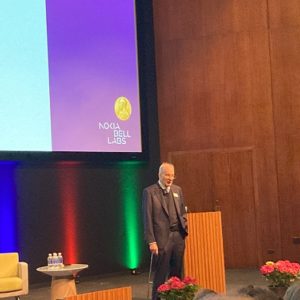Sponsored Post: ESOP: Another Exit Strategy for a Mature Tech Company

The usual exit path for the entrepreneur who started a tech company is a sale to either a strategic or a financial buyer. Undoubtedly the strategic buyer who rides in over the hill with a highly attractive, all cash offer is the dream of most startups.
Not quite as attractive is a generous, mostly cash offer from a financial buyer, such as a private equity fund. But as many entrepreneurs are well aware, both strategic and financial buyers have their own agenda, and are not necessarily interested when the owners of a startup want to (or need to) sell.
One alternative is for the entrepreneur to create one’s own financial buyer. It is a little known fact that such a buyer exists and is available in most instances. To understand how this works, a few basics about the mechanics of these transactions is necessary.
Financial buyers generally value companies by the amount of income they are expected to generate for their investors, known as a Discounted Cash Flow (DCF) analysis. The value of the company is a multiple of the income generated by its operations. Therefore if a 20% return on investment is desired by the financial buyer, and the target’s annual earnings are $1,000,000, the value of the company is $5,000,000.
Once a financial buyer acquires the company, it will often use its assets and ability to generate income as security to finance all or part of the cost of the acquisition. This is known as “levering up” a company. In simple terms, a financial buyer uses the company’s own value to finance its acquisition from its founders.
Many owners of tech companies don’t realize that they can accomplish the same result by selling their shares to their employees through an Employee Stock Ownership Plan ( ESOP). While an ESOP is similar to a profit sharing or 401(k) plan, in operation, its main function is to serve as a market for the stock of any privately-held company. The owner sells his or her stock to the ESOP and the ESOP will borrow funds (using the value of the company) to purchase the shares, or the seller can finance all or part of the sale.
The advantages of ESOPs over a sale to a financial buyer are the tax advantages. In general, the entire cost of the acquisition is tax deductible. Transactions that meet additional conditions (such as sales of 30% of the shares of C corporation stock) qualify for deferral of seller’s capital gain tax. Also, ESOPs tend to incentivize all employees to achieve superior performance. These advantages add “value” to the transaction.
By the same token, ESOPs are not always the right vehicle. Usually, the value of the company should be at least $5,000,000, to justify the cost of structuring the transaction. Also, it should have relatively consistent history of profitability and cash flows. Finally, the company should have a minimum of two or three individuals in– or capable of growing into– senior management positions who can operate the company when (and if) the sellers relinquish their active involvement in day-to-day operations.
While all full time employees must share in the value created by the ESOP, they have no rights to approve the sale and have no right to see non-public financial information about the company.
The bottom line is that the sale to an ESOP should be considered by any entrepreneur of a mature tech company who is thinking about an exit strategy.
[The author, Harvey Katz, is co-chair of Fox Rothschild’s Employee Benefits & Compensation Practice (Roseland and New York). He is also the husband of publisher Esther Surden and the primary financial backer of NJTechWeekly.com.]

